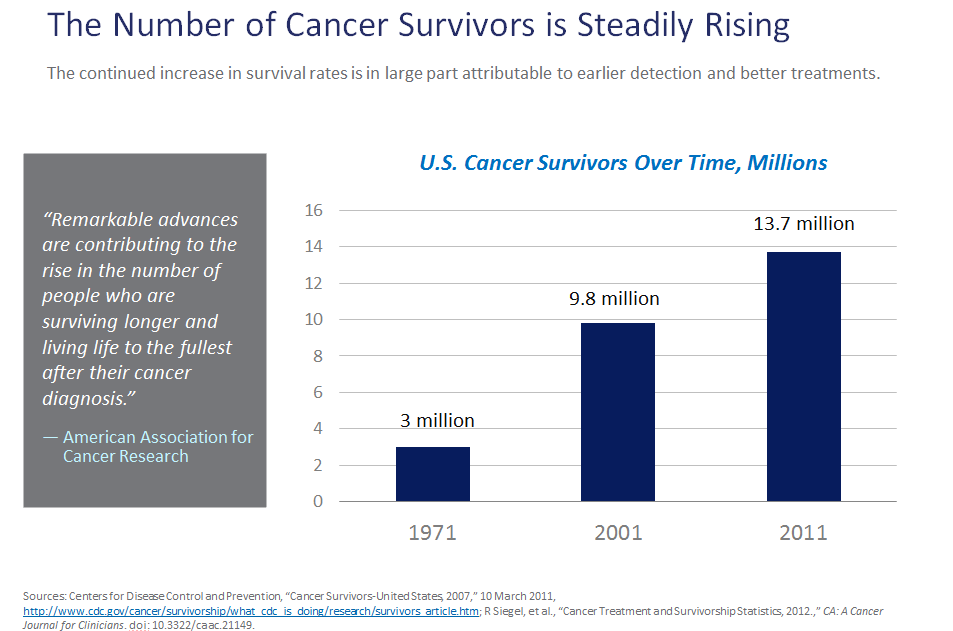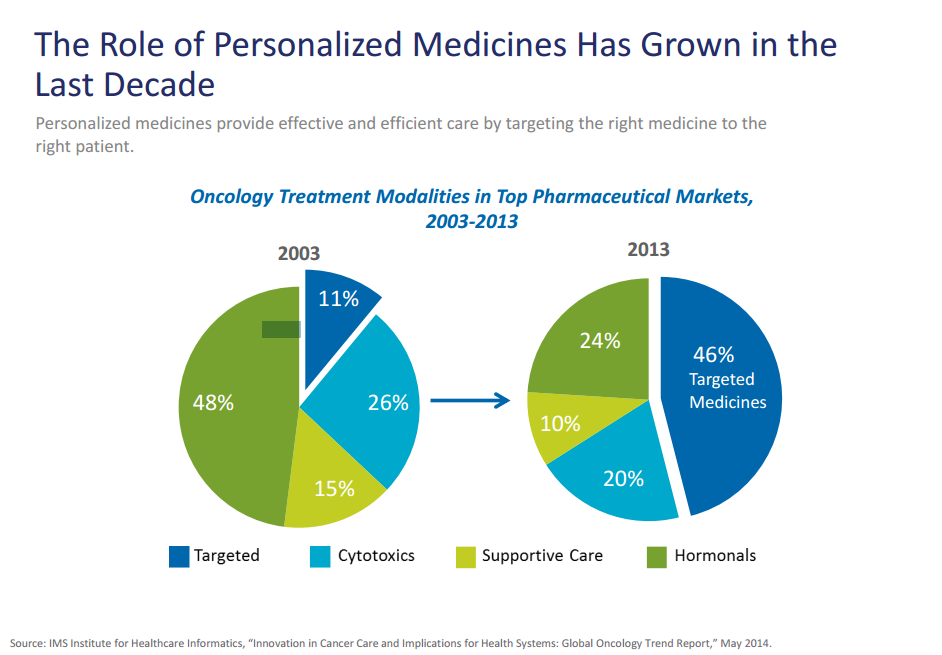
New Chart Pack: Big Strides in Fight Against Cancer
Print
03 June 2015
John Castellani / PhRMA
In December 2009, Matt Ellefson received news from his doctor that no one ever wants to receive: a diagnosis of advanced non-small cell lung cancer. He faced a five-year survival rate of less than five percent. Nearly six years later, Matt is not only surviving, but thriving, thanks in part to innovations in cancer medicines.
Stories like Matt’s illustrate that every advance in cancer treatment, no matter how small it may seem, can make a lifesaving difference. And why medicines should not be evaluated based on the projected value they provide to an average patient, but on the value treatments provide to an individual patient. Value is not a simple term to define in cancer care. For some patients, value can mean more time spent with loved ones, an improved quality of life or increased productivity.
In the last several decades, our scientific understanding of cancer has grown by leaps and bounds. In turn, we’ve seen remarkable advances in cancer prevention, diagnosis, and treatment. Our new chart pack –Cancer Medicines: Value in Context – tells an astounding story about the progress made in fighting the more than 200 diseases we collectively call cancer. Before you take a deeper look at the detailed charts, let me point out four highlights:
- The five-year survival of cancer patients is increasing for many types of cancer. In fact, in 2015, the chances that a cancer patient will live five years or more has increased by 39% across all cancers. And 83% of those survival gains are attributable to new treatments — including medicines.

- The number of cancer survivors is steadily rising. The Centers for Disease Control counted 13.7 million cancer survivors in 2011, their most recent analysis – and more than four times the number of survivors in 1971, the beginning of the War on Cancer. The continued increase in survival rates is in large part attributable to earlier detection and better treatments.

- The role of personalized medicines has grown in the last ten years. In 2003, targeting medicine specific to the individual patient represented just 11% of the cancer treatment in top pharmaceutical markets. In 2013, targeted treatments were 46% of oncology treatments.

- There are more than 1,000 medicines in development for various cancers – and 73% of those have the potential to be personalized medicines.

America’s biopharmaceutical researchers work night and day to discover and develop treatments that can extend these inspiring leaps in progress against cancer. As our country continues looking for ways to contain health care costs, it’s important to recognize the real value that new medicines play in improving patients’ lives.
Share your thoughts about the chart pack in the comments section below.
All Portfolio
MEDIA CENTER
-
The RMI group has completed sertain projects
The RMI Group has exited from the capital of portfolio companies:
Marinus Pharmaceuticals, Inc.,
Syndax Pharmaceuticals, Inc.,
Atea Pharmaceuticals, Inc.

